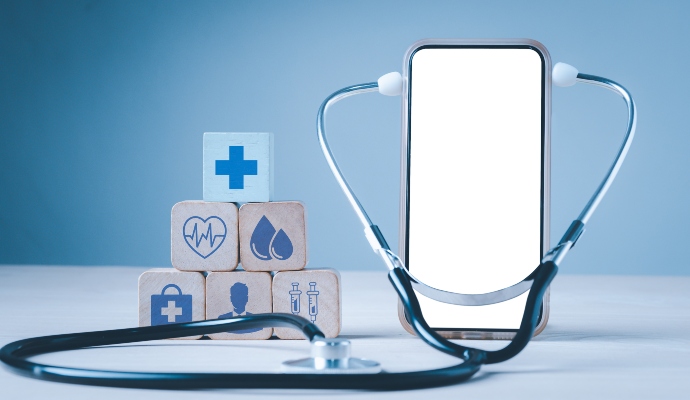Digital Engagement with RPM Boosts Post-Discharge Care Coordination
A digital engagement program leveraging an RPM solution helped increase touch points between patients and clinicians following discharge, research reveals.

Source: Getty Images
- Digital engagement post-discharge with an RPM system helped increase touch points between patients and healthcare providers but did not impact the rate of readmission, recent research shows.
Published in the American Journal of Managed Care earlier this month, the study examined the impact of a post-discharge digital engagement program on care coordination and readmissions.
Discharging patients to their homes after a hospital stay is a delicate process, rife with potential hazards that could threaten patient safety and adversely impact outcomes, even resulting in readmission to the hospital. Readmission rates in the United States ranged from 11.2 percent to 22.3 percent in 2023, with Massachusetts, Florida, New Jersey, Rhode Island, Connecticut, and Washington D.C. hospitals having average readmission rates of more than 15 percent, according to data from Definitive Healthcare.
Enhancing care coordination can reduce readmissions and emergency department (ED) visits, but the cost of care coordination is high, ranging from $174 per Medicare beneficiary to $1,643 per Medicaid beneficiary, according to a 2018 analysis.
Thus, researchers from the Medical College of Wisconsin and Froedtert & Medical College of Wisconsin Health Network assessed the impact of a post-discharge digital engagement program leveraging a remote patient monitoring (RPM) system on post-discharge care.
The researchers examined inpatient hospital discharges between March 2020 and November 2020. They stratified the discharge data by readmission risk, offering low-risk patients access to the post-discharge digital engagement program and offering moderate-risk and high-risk patients access to both the program and traditional care coordination.
The post-discharge digital engagement program leveraged the GetWell Loop RPM solution, enabling more touch points between patients and clinicians through a responsive web or mobile application. The program provided 12 days of check-ins related to progress and symptoms for low-risk patients and 30 days for medium- to high-risk patients. The patients received bidirectional questions about their care transition stage and educational guidance regarding their discharge diagnosis through the solution.
A care coordination team at the health system monitored patient check-ins and free-text comments, and if a patient had concerns or questions, a team member would connect with the patient through the app or the telephone.
Researchers examined 5,490 patient discharges, of which 1,949 were categorized as high risk, 2,032 as medium risk, and 1,509 as low risk. After adjusting for time and patient factors, they found that the post-discharge digital engagement program did not significantly affect readmission rates among low-risk, medium-risk, and high-risk groups.
Researchers also found no differences in readmission rates among the 25.6 percent of low-risk, 12.6 percent of medium-risk, and 10 percent of high-risk patients who activated the program.
However, they did observe that patients who activated the program were generally younger, White, and had private insurance.
Thus, while post-discharge digital engagement provided more touch points between patients and providers, it did not significantly impact readmission among low-, medium-, and high-risk patients.
“Although this technology is accessible to patients with a smartphone or a web browser, technological literacy can limit the successful usage and understanding of this application,” the researchers wrote. “As such, it is important to target these user difficulties in the improvement of PDDE [post-discharge digital engagement.]”
Health systems are increasingly employing digital health strategies to engage patients in care.
For instance, UPMC launched a telehealth bridge clinic during the COVID-19 public health emergency to offer low-barrier access to substance use disorder treatment. In February, the health system published an assessment of the clinic’s efficacy in supporting patient engagement and access among opioid use disorder (OUD) patients.
Of the 208 individual patients who scheduled appointments at the telehealth bridge clinic from April 27, 2020, to July 31, 2021, 200 (96 percent) attended their appointments. Further, 192 patients participated in a telehealth appointment for OUD treatment, of which 96 percent filled a buprenorphine prescription within 30 days, and 77 percent filled two or more prescriptions after that.
